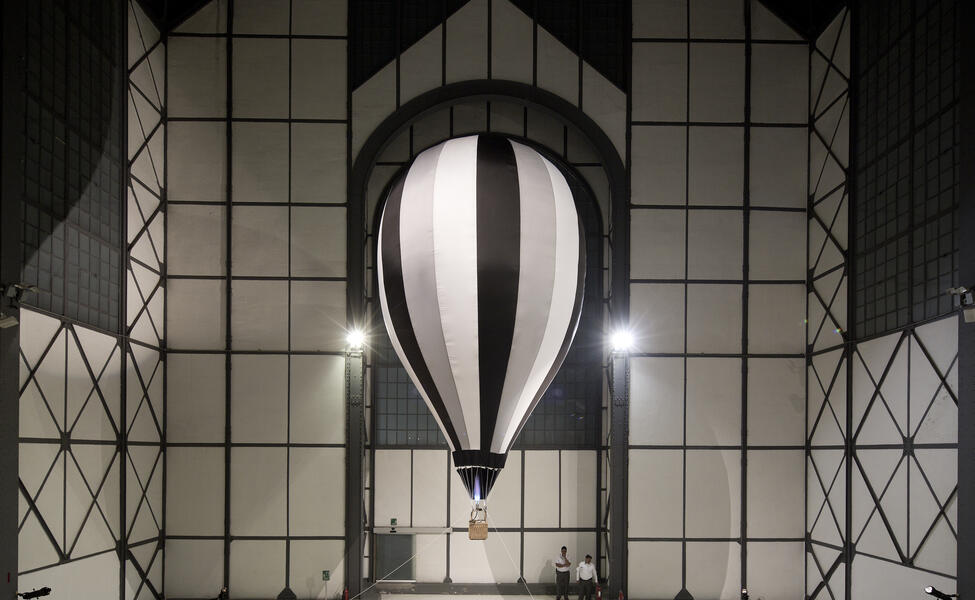Captive Ascension: Tania Candiani at the Museo Universitario del Chopo
Unitl May 13th you can see in the central hall of the Museo del Chopo an exhibition of the Mexican artist Tania Candiani consisting of three stages: the first will install a sewing workshop where two seamstresses will make a large aerostatic balloon, piece main of the exhibition. The second stage consists in the rise and fall of the balloon, as a unique presentation for the public on the day of the inauguration. And the third stage will consist in the exhibition of the balloon inside the gallery.

In the curatorial text, Itzel Vargas Plata states that "in Tania Candiani's discourse there are frequent references to the symbolic implications of the inventions of man linked to progress, as discernment and conquest of his environment. Aerostatic balloon is the trunk that articulates its interest in the branches of history, discoveries and technology, in this case, it makes direct reference to aeronautics and the building that houses the museum, whose structure was built to present the Industrial Exhibition and Commercial of Düsseldorf, Germany in 1902 .. At that time the Universal Exhibitions showed the technological and industrial advances, offering, for example, ascensions of captive balloons, which were part of the collective spell offered by the vanguard".
Tania Candiani has extensive experience in Mexico and abroad. He has developed his work in various areas; his artistic practices refer to the complex intersection between language systems -phonic, graphic, linguistic, symbolic and technological-. Through the exploration of elements such as sound, words, diagrams or machines, the artist recreates unique translations that enhance the possibilities of language, generating different combinations of meaning and expression. In recent years he has made interdisciplinary collaborations to combine various contributions in the fields of knowledge and research, consolidating intersections between art, design, architecture and science, without dispelling his interest in pointing to the poetic encounter between them. From these collaborations, his works are large-scale projects in which he explores the possibilities of technology, research on time, sound and narrative mechanisms.




